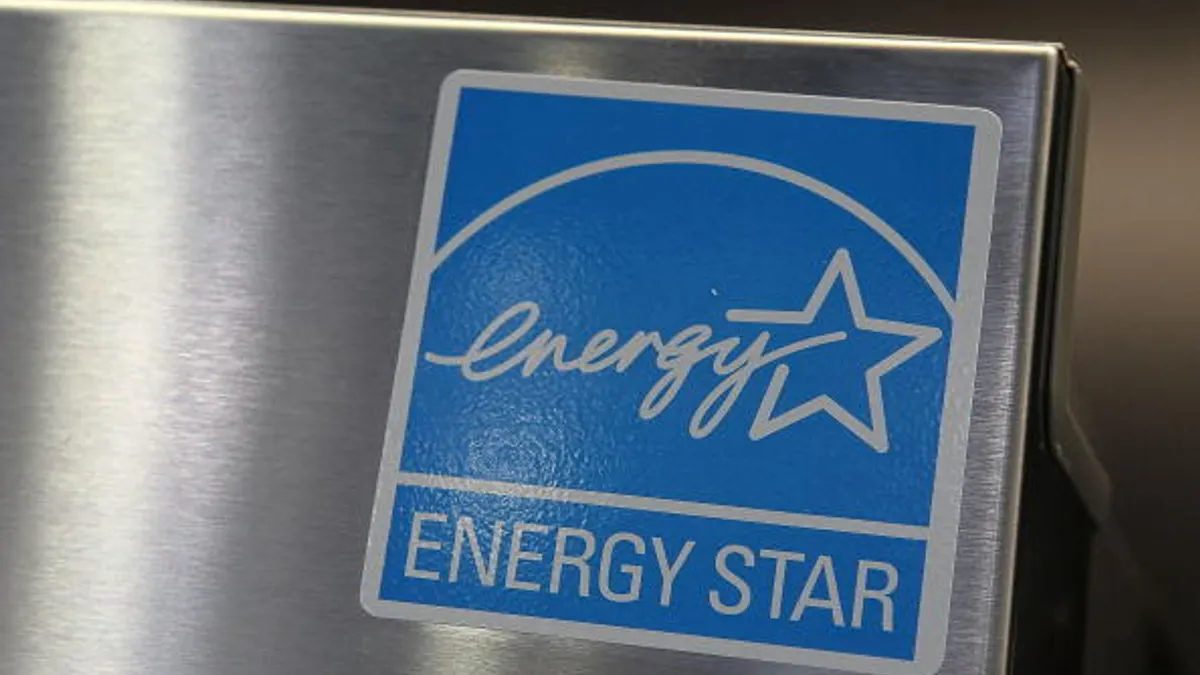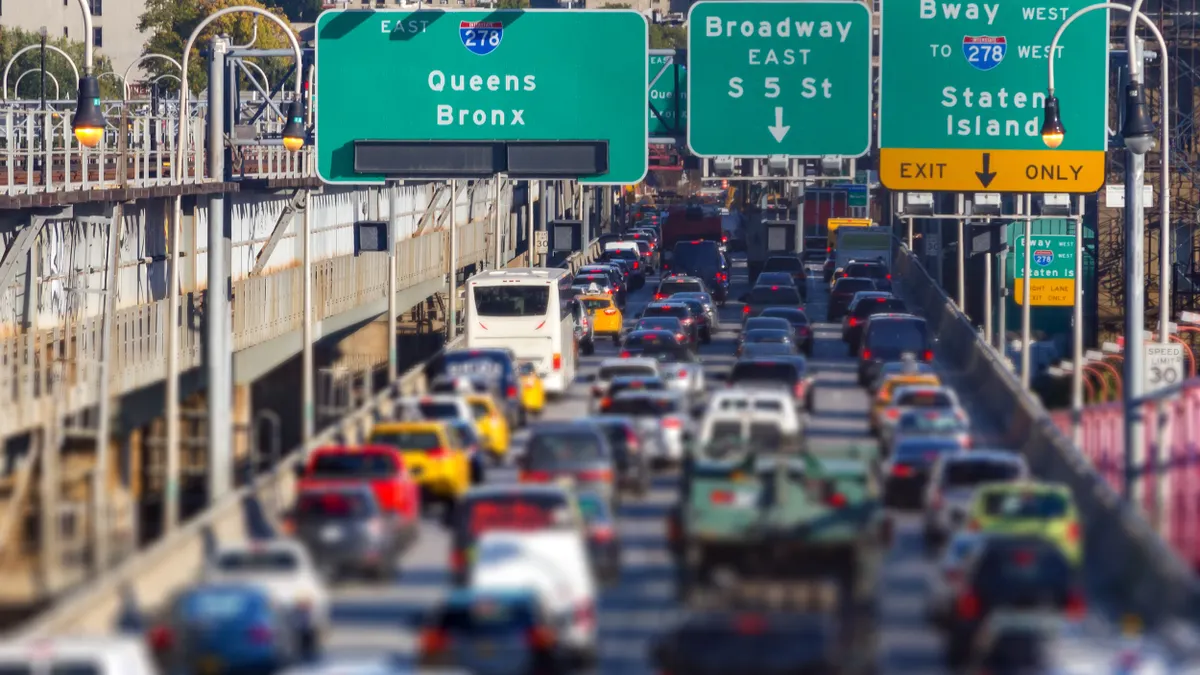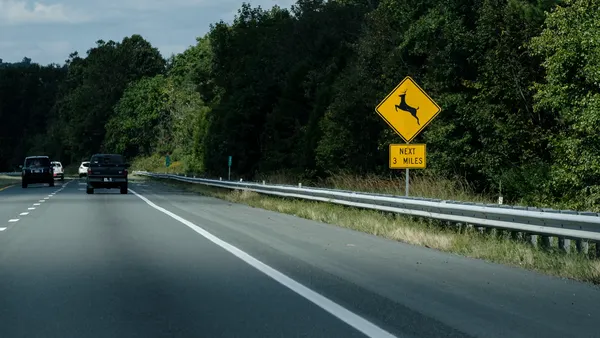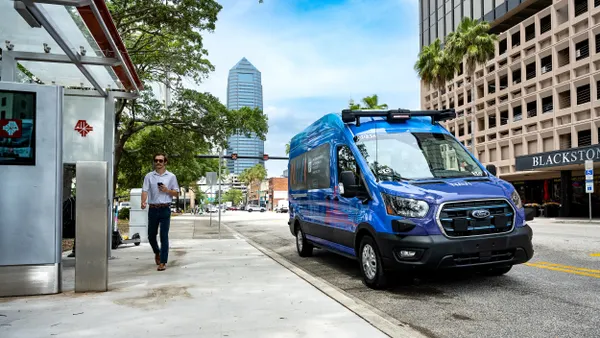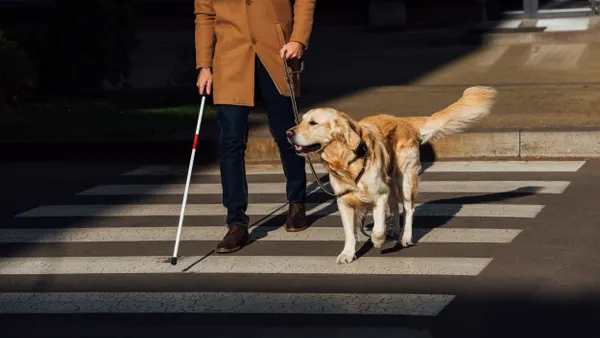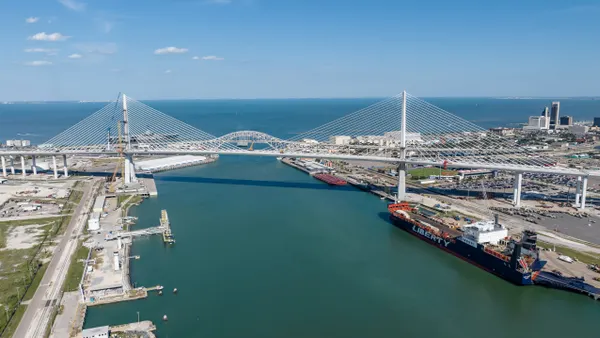Dive Brief:
- It will take technology and policy interventions to ensure that buses in the Washington, DC region do not become "the mode of last resort" or "the mobility option reserved only for those who have no other choice," according to a new report from the Washington Area Bus Transformation Project. The network needs to be "customer-focused" to reverse declining ridership, the report says.
- Among the recommendations are a mobile or off-board payment system, more affordable options like free bus-rail transfers and upgraded vehicles. The report also recommends more bus lanes or priority signals to prevent delays.
- The draft report will inform a final road map to be issued in 2020, with a one-, three-, five- and 10-year action plan that could overhaul the bus network.
Dive Insight:
The Washington region’s bus network has not been immune to national trends of declining transit ridership. According to the report, ridership has fallen an estimated 13% between 2012 and 2017. Buses are a "space- and cost-efficient means to move large numbers of people," the group says, but are not being used effectively at the moment. That’s why the report details a top-to-bottom overhaul from fares to routes.
Robert Puentes, president of the Eno Center for Transportation and chair of the project’s executive steering committee, told The Washington Post that the goal was to create "a better system that works when, where and how customers need it."
A key recommendation is that the region redesign routes and adopt guidelines to "provide customers with the right amount of bus service by location and time of day," including the possibility of flexible, on-demand transit. That mirrors the recommendation of a national report from KPMG, which said that "current fixed-route bus service has not kept up with consumer preferences or been responsive to shifts in value of time perceptions." That report said agencies should find non-traditional sources of data to meet riders where they are, and comes as many governments have taken comprehensive looks at their route and schedule plans.
The report also focused on ways to reduce delays and slow service by prioritizing buses on roadways and exploring options like lane management, congestion pricing and parking limitations that would help buses move more efficiently. Other cities have taken similar steps to make bus service more appealing; New York City, for example, has cracked down on illegal parking and redesigned some streets as part of a broader strategy to speed up buses.
Even with changes, bus service could still face headwinds, especially from ride-hailing and car-sharing services, which have siphoned off some riders. Working with services like Uber and Lyft — which have built in transit information in some cities — could be another strategy to make buses a more appealing mobility option.



